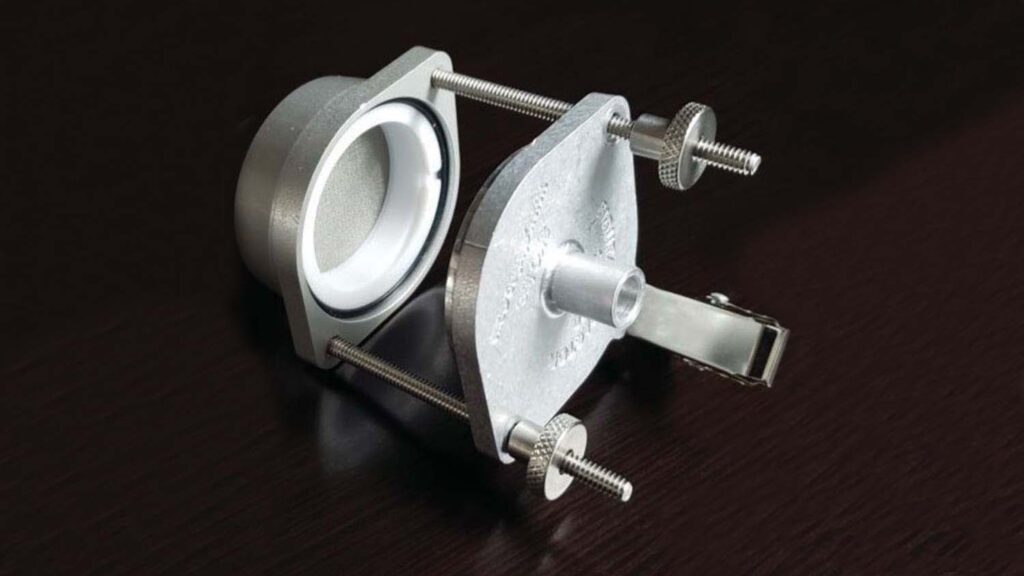Material-Level Evaluation of Particulate Filtration Efficiency

TPACC has developed a new material-level evaluation of particulate filtration efficiency for materials that could be implemented for mask particulate filtration. This methodology was created as a screening tool to characterize the performance of materials that are currently being implemented or considered for mask filtration purposes.
The test method utilizes a modified Sioutas Particle Impactor to hold the material sample in place during testing and has the capability to test single and multiple layers. Currently, this test counts the up and downstream of ambient particles and is measured at six size ranges: 0.3, 0.5, 1, 2, 5, and 10 μm. Duration of each test is 1 minute with 3 cycles of testing per sample.
The nature of this evaluation is to obtain fast, efficient, and repeatable results that can be used as an initial screening for evaluation of material particulate filtration efficiency.
Preliminary material-level testing has revealed that in ambient conditions, particulate filtration efficiency using N95 material samples remains the gold standard for personal protective equipment (PPE). Alongside this baseline sample, three other samples were tested to cha racterize the material’s particulate filtration efficiency performance. These included a standard surgical mask, coffee filters (3 layers), and plain cotton sheeting (4 layers).
Selection of these material samples were based on the popularity and availability to the general public in response to the COVID-19 pandemic. The graph highlights the initial data based off preliminary tests used to screen the material samples. At about 0.3 microns, the % Particulate Filtration Effi ciency (%PFE) can be viewed with each material sample evaluation.

For more information on TPACC testing capabilities related to COVID-19 response, contact
Shawn Deaton, Special Projects Director
asdeaton@ncsu.edu
919.749.6384
textiles.ncsu.edu/tpacc